|
Fillmore “F” By Dorothy Lynch
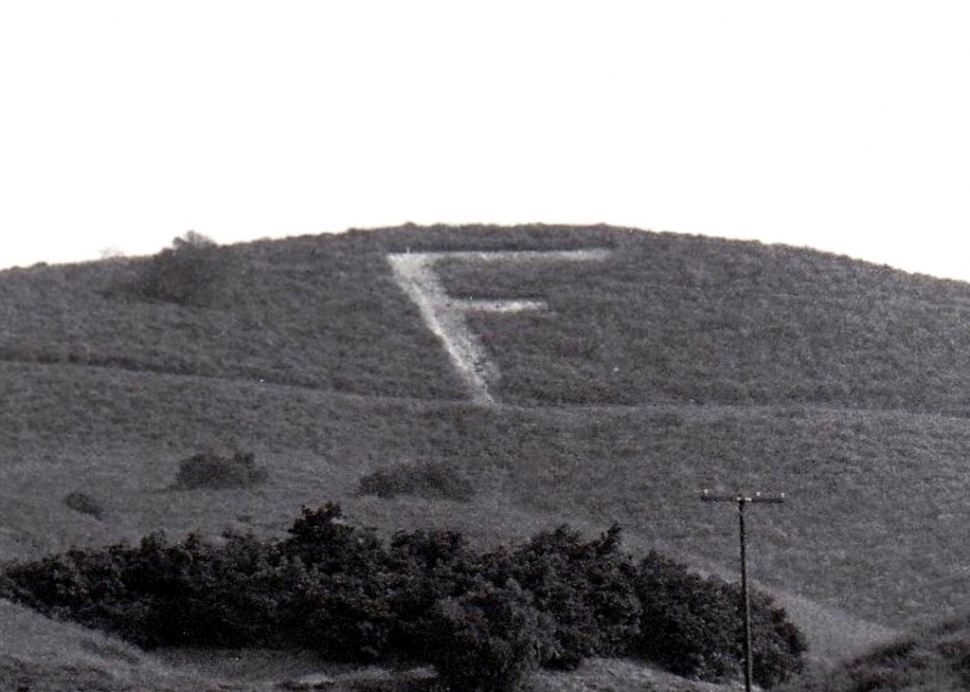 The well known F on hill in Fillmore in 1986, which went up back in May 1936. Photos courtesy Fillmore Historical Museum. By Gazette Staff Writers — Wednesday, December 1st, 2021
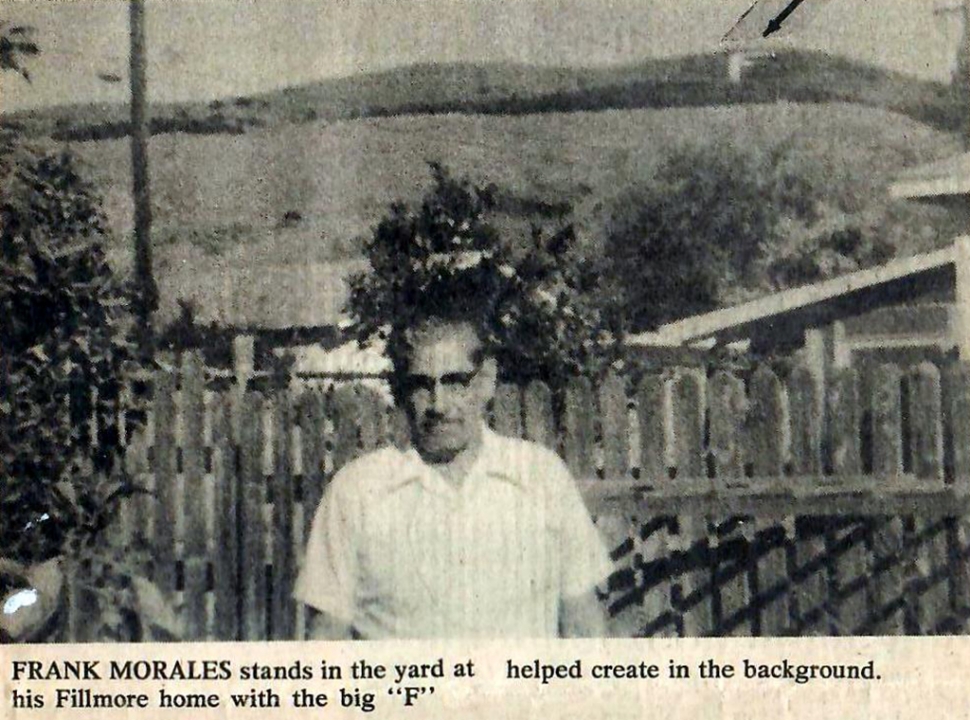 A clipping of Frank Morales in 1980 with Fillmore's F in background. 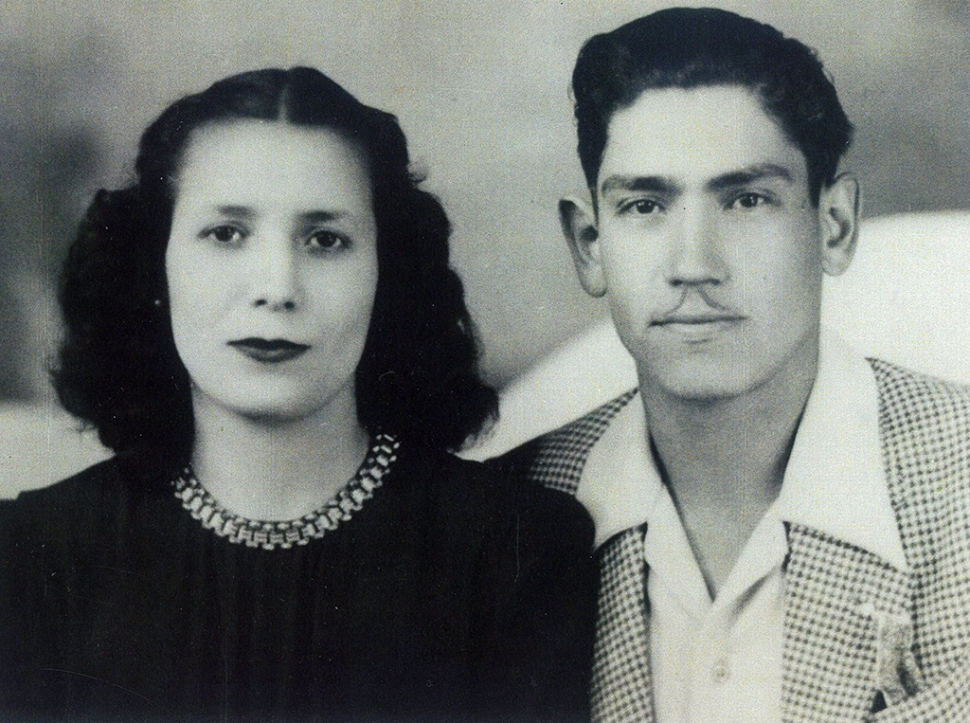 Georgia & Frank Morales 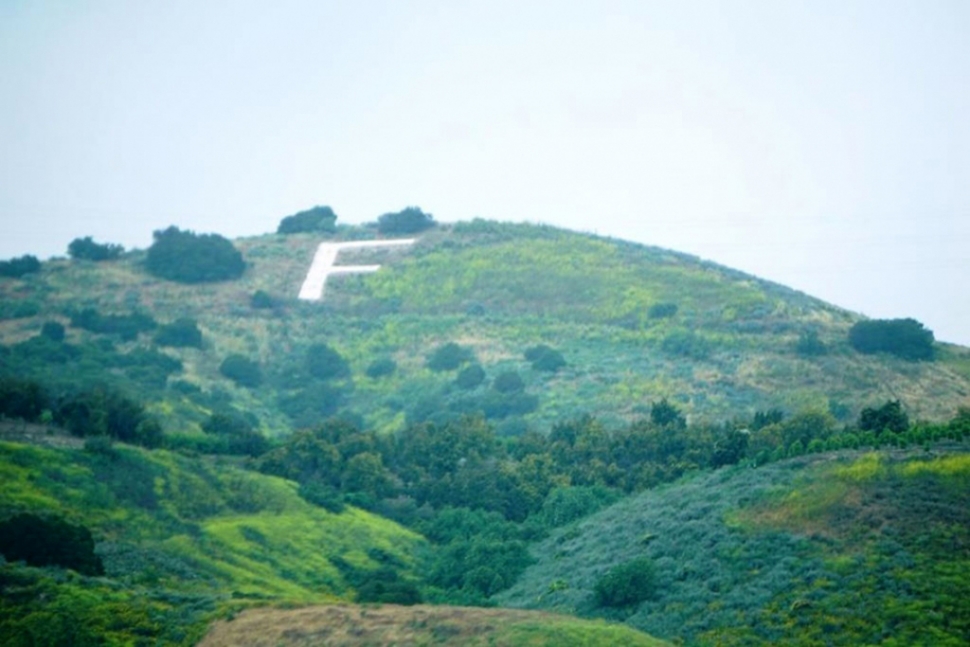 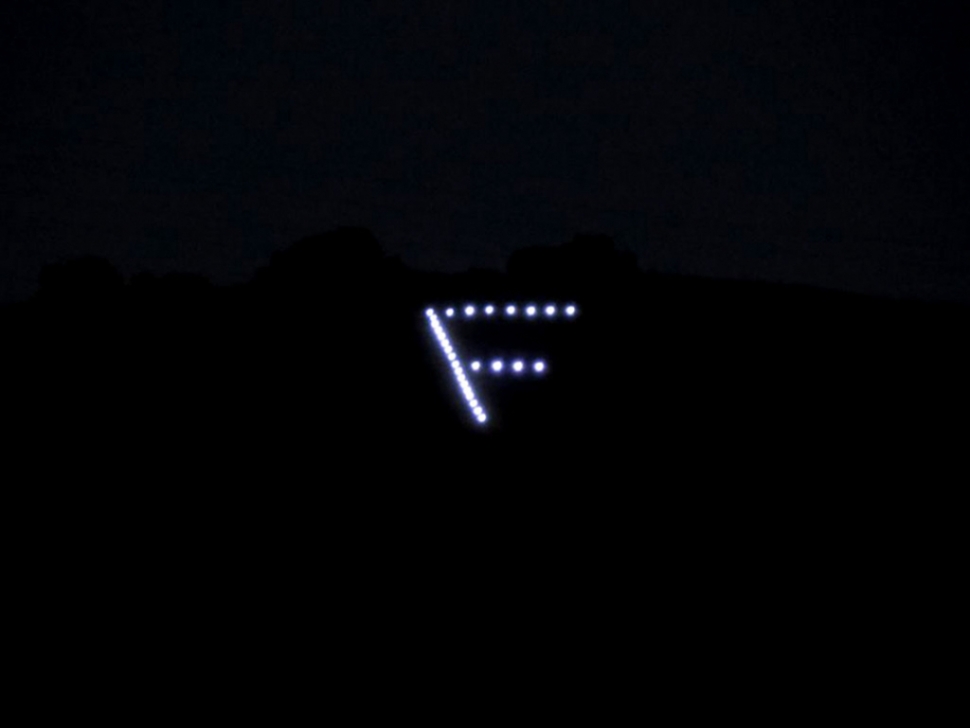 The F now lights up at night. Courtesy Fillmore Historical Museum Recently museum staff was sorting files and found the following story about the Fillmore High School “F” up on the hill. The following story was written by Dorothy Lynch for the Fillmore Herald January 10, 1980. We hope you will enjoy it. One of Fillmore’s best kept secrets has to be the origin of the big white “F” on the hill east of town. Everyone we asked was eager to tell us how the letter is limed annually. But had a soul known of its beginnings. Until a call to Joel Schwartz ended the search. “Frank Morales built it,” his daughter told us. And so he did. Mr. Morales, who recently retired from the Fillmore High School custodial department, tells it this way: “The letter went up on May 10, 1936. My cousin, Leonard Riesgo, a friend, Mike Sanchez, and myself were chatting. We knew Santa Paula had letters. It would be nice if we could make an “F” for Fillmore. So we started looking. At first we thought we would make it where the star is now. But that was quite a ways to climb. Then we decided to put where a cross was then. We thought we could see all the valley from there. We took some tools and went there around noon that day and started working. Then went back the next day to finish. It was a pretty good-sized letter. The funny thing is, the city didn’t say anything. They never said anything at all.” In searching through newspaper copy for May and June 1936, there is indeed not one word regarding the new letter on the hill. The letter, however, has not always gone unnoticed. Edith Jarrett told us that the Fillmore High School Alumni Association had hunted for information several years ago. Records at the Museum were gone through. People got out old pictures. And finally, Mr. Morales himself offered a $10 reward to whoever could find the builder and the date. Nobody could and the prize was never claimed. “I finally told Charlie Mozley that I did it. It’s nice to look at it. You can see it from Santa Paula and, on a clear day, if you stand by the letter, you can see the ocean,” Mr. Morales said. The letter was originally a just a bare spot and burned off at least once in a fire. Morales, Riesgo and Sanchez vowed to always keep the letter neat, and that they did. One year, however, it snowed on the hill and as the snow melted the deeper snow on the “F” remained, leaving a beautiful sight. It is believed this started the tradition of having the students lime the letter to keep the look of the snow. Mr. C. J. Herrill, Fillmore High School student advisor, told us, “The work is done the first Saturday in May each year by the freshman class. They lime the “F” and have a class party afterwards. It takes 50 sacks of lime, which are paid for out of the district budget for educational expenses. It takes about two hours of cleaning and liming. This is not a required subject, it’s extracurricular. The “F” is about 50 yards long and 30 yards wide at its widest point. Work is done when the growth is finished and the rainy season is over. We figure it probably won’t grow much until they do it again next May.” He keeps a record of the time it takes from the first hoe to the last liming, and they are back on Highway 126. Then they take a look at it and deduct points if it’s not a good job. “It’s a tradition and the students like to do as good or better job than the class before them,” said Mr. Herrill. Harry Bigger, principal from 1955 to 1967, told us that Mr. Herrill’s students developed a unique method of painlessly and hurriedly finishing the lime job. Each student would hold a sack of lime on his or her back and stand at the top of the hill. Then someone would slit the bottom of the bag and the student would run toward the bottom of the letter neatly depositing the lime in the chosen path. Rumors regarding the “F” on the hill are many. The most common story has it that the lime was not put on the hill during the war so as not to attract attention. Access to the letter is either by climbing or by driving (as the freshman class does) through Texaco back roads, which is private property. Considering the fact that all residents of Fillmore live under the “gaze” of the great letter “F” on our hill, and are guided homeward by its presence, we for one are pleased to know its origins and thank Frank Morales, Leonard Riesgo and Mike Sanchez for their contribution to Fillmore history. Long may it stand. |
